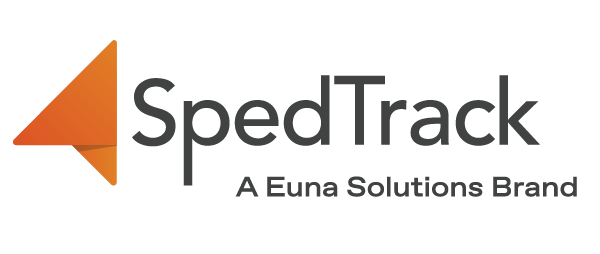Educational Benefit: What Is It?
In special education, the “educational benefit” is vital in defining IEP goals and desired outcomes for a student.
However, the term “educational benefit” had not been clearly defined until May 2016, when the U.S. Solicitor General’s office asked the United States Supreme Court to review an already tried and appealed lawsuit concerning special education.
The legal process needed to resolve the issue of what an “educational benefit” entailed and the level required to satisfy the Free Appropriate Public Education (FAPE) standard stipulated in the Individuals with Disabilities Act (IDEA).
This special education case is the Endrew F. v. Douglas County School District RE-1, which now provides a “substantive standard on whether a child’s IEP is sufficient to confer an educational benefit on a child with a disability.”
Continue reading below to learn how this landmark case demonstrated the importance of having a standard definition for “educational benefit” and the need to implement periodic progress monitoring.
What Is the Importance of Educational Benefit?
According to the Supreme Court case decision on Endrew F. v. Douglas County School District RE-1, educational benefit means that for a student to make appropriate progress, their IEP must be thoughtfully considered—or reasonably calculated—to reflect appropriate progress considering the child’s circumstances.
This builds on the interpretation of the FAPE requirement from the Board of Education v. Rowley, 458 U.S. 176 (1982). In this decision, the Court stated that based on IDEA requirements, the Individual Education Program (IEP) of a student with special needs must be thoughtfully considered so that the child is able to make appropriate progress and gain educational benefit.
These decisions emphasize that students with disabilities must have an IEP that is tailored towards their unique needs and results in educational benefit.
Educational benefit is crucial because of the following reasons:
- Focusing on the student’s individual needs establishes a starting point for the educator to track progress specific to their own pace, background, and situation.
- An IEP centered on educational benefit shifts focus away from mere administrative adherence to decision-making hinged on individualized student needs.
- Well-defined educational benefit recalibrates the IEP content to focus on student progress while keeping special education programs in line with the substantive standard implemented throughout the country.
The Case of Endrew F. v. Douglas County School District RE-1
Let’s take a step back and look into what happened in the Endrew F. v. Douglas County School District case.
Endrew F. was a student in the Douglas County School District from preschool to fourth grade. He was in fifth grade in Summit View Elementary School when he began to show “severe behavioral issues” associated with autism, which stalled student progress.
His parents then decided to enroll him in Firefly Autism based in Denver, Colorado specializing in autism, with a private school tuition of $70,000 annually.
Endrew’s parents decided to seek reimbursement for these costs after claiming that the school district failed to meet the IEP requirements and that Endrew had been denied the right to FAPE.
The school argued that FAPE only requires “some educational benefit,” one that they claimed was de minimis, or giving the minimum.
The main point of contention for this case is the required level of educational benefit that school districts must provide to children with disabilities to comply with IDEA.
The inconsistency in interpretation throughout the country of what “educational benefit” means according to FAPE requirements was a significant challenge in ensuring appropriate and equitable education to all children with disabilities.
This is why many parents and special education advocates consider the US Supreme Court’s decision on this case a significant win for children with special needs.
Individuals with Disabilities Education Act (IDEA)
The Individuals with Disabilities Education Act (IDEA) is a special education law that ensures FAPE is provided to eligible students nationwide—those with disabilities including autism, learning disabilities, and speech disorders.
IDEA demands that children with disabilities receive an Individualized Education Plan (IEP), which is a plan tailored to meet each student’s individual needs. The IEP includes information on the student’s present level of achievement and functional performance, annual goals, special education, and related services to be provided to the student, and any special accommodations and modifications to be provided to the student.
While these are all stipulations in the law, IDEA originally provided a vague definition of “educational benefit” or the level of support given by schools for students with disabilities.
The Endrew F. v. Douglas County School District resolved this issue by clarifying IEP goals and objectives for special education students to be “challenging” and “appropriately ambitious” according to the child’s circumstances.
Free Appropriate Public Education (FAPE)
IDEA requires that each state provide special education and related services to all students who qualify after an evaluation process. One of the special education rights outlined in IDEA is known as FAPE or “Free Appropriate Public Education.”
FAPE refers to special education and educational activities provided at no cost to parents, designed to meet a child’s unique needs.
The US Supreme Court ruled that children with disabilities are entitled to more than just access to school; they are also owed free educational opportunities appropriate for their identified needs.
The US Supreme Court previously addressed the FAPE requirement in the Board of Education v. Rowley, 458 U.S. 176 (1982), a case involving a first grader with impaired hearing. In this case, the Court stated that complying with FAPE depends on:
- Whether the district followed IDEA’s procedures
- Whether the IEP is thoughtfully considered—or reasonably calculated—to empower the child in making appropriate progress and to provide educational benefit
With the Endrew F. v. Douglas County School District, the Court considered the “educational benefit” as the basis for its decision.
The Court’s Decision
In the 1982 Hendrick Hudson Central School District v. Rowley case, the supreme court defined the term FAPE. However, the state did not need to “maximize each child’s potential”. This left a blurry line between providing the baseline for FAPE and doing everything possible to help the child advance.
This line of thinking was reinforced in May 2016 when the U.S. Court of Appeals for the Tenth Circuit ruled in the Endrew F V Douglas County case that the school district had met the IDEA’s educational benefit requirement after the school provided the student with minimum educational benefit.
However, the Supreme Court rejected the previous interpretations of the FAPE requirement.
According to the Chief Justice, the U.S.C.’s decision asserted that a public school must develop an IEP that is thoughtfully considered—or reasonably calculated—to reflect the child’s circumstances, enabling them to make appropriate progress and gain educational benefit.
For a student with a disability and special needs, their IEP must be “appropriately ambitious” with “challenging objectives,” all while reflecting their individual circumstances. “Appropriately ambitious” has been likened to the advancement of children from one grade level to the next in the regular classroom.
Progress Monitoring to Track Educational Benefit
The Court’s decision on Endrew F’s case has had a significant impact on how special education professionals view IEP goal-setting and progress monitoring.
The burden is now on school authorities to defend IEP goals and objectives such that they are “appropriately ambitious” and sufficiently challenging.
Recommendations to continue IEP goals year after year should go through a thorough review accompanied by a detailed explanation justifying this decision.
The Supreme Court case decision also recommends that school authorities provide a detailed explanation as to how a child’s IEP is thoughtfully considered—how it can enable the student to make appropriate progress given their individual circumstances needs.
Demonstrating that IEP goals are “appropriately ambitious” requires concrete data, which can be provided by progress monitoring.
Progress monitoring enables educators to understand the student’s academic progress, set the method and parameters for collecting data and tracking, and provide a tailored learning experience for the child.
By regularly tracking appropriate progress, an IEP team can identify an individual student’s strengths and discuss whether their IEP goal is still relevant or if they have mastered it.
Progress monitoring leads to insights on whether a child’s IEP goals and targets need to be adjusted as learners advance to the next grade level.
Track Educational Benefit with Progress Monitoring from SpedTrack
The case Endrew F. v. Douglas County School District demonstrates the importance of ensuring that students have adequately challenging goals and that districts are actively monitoring progress against these goals. Progress monitoring tools play a critical role in tracking student progress and giving districts an opportunity to make timely adjustments.
SpedTrack’s robust suite of special education tools can simplify progress monitoring and help ensure your students receive the educational benefit that is required.
Contact us to learn more about how you can simplify your special education programs.


















